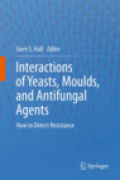
Interactions of yeasts, moulds, and antifungal agents: how to detect resistance
Hall, Gerri S.
The incidence of fungal infections increases with the increase in antibiotic usage and increasing immunosuppressed populations. There is no longer only oneantifungal agent and the response of fungi to various agents is not always predictable. The need for standardized antifungal susceptibility testing, and standardized interpretation of results in conjunction with studies that describe clinical outcomes based on those tools is ever important. Interactions of Yeasts, Moulds, and Antifungal Agents: How to Detect Resistance covers the available antifungal agents, how to perform in vitro testing and how those resultsshould be interpreted for the most common fungal pathogens. References about antifungal agents and how to test for their resistance and interpret results. Standardized up-to-date methods for susceptibility testing. Provides a clear overview of the basics. INDICE: Antifungal Agents. Antifungal Susceptibility Testing: Clinical Laboratory and Standards Institute (CLSI) Methods. Antifungal Susceptibility Testing Methods - Non CLSI Methods for Yeast and Moulds. Susceptibility Testing ofDermatophytes. Usual Susceptibility Patterns of Common Yeasts. Usual Susceptibility Patterns of Common of Moulds and Systemic Fungi. Usual Susceptibility Patterns for Systemic Dimorphic Fungi. Utility of Antifungal Susceptibility Testing and Clinical Correlations.
- ISBN: 978-1-58829-847-8
- Editorial: Humana Press
- Encuadernacion: Cartoné
- Páginas: 138
- Fecha Publicación: 28/01/2012
- Nº Volúmenes: 1
- Idioma: Inglés
